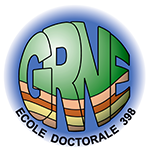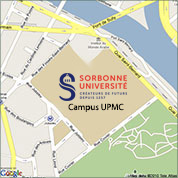Séminaire ISTeP - Marion Thomas
(Oxford)
What are the properties and processes controlling the constitutive behavior of active faults ?
The expanding set of seismic and geodetic observations on active faults causing large earthquakes, have documented the large variability of slip behaviors. In the seismogenic depth range, fault slip might be dominantly seismic in places, i.e., displacement occurs during earthquakes (slip rate of m/s), and dominantly aseismic in others as a result of steady or transient creep (microns/s). Those observations combined with numerical studies have demonstrated that the seismogenic potential of a fault strongly depends on the partitioning between aseismic and seismic slip. However, how this partitioning varies in time and space and what factors govern this behavior remain poorly understood. This severely limits our ability to assess the potential size, magnitude and recurrence of earthquakes on active faults. The research approach undertaken tends to cut across traditional disciplinary bounds and promote multidisciplinary studies using field observations, geodetic measurements, laboratory experiments as well as numerical studies to better understand the evolution of fault zone properties and associated processes occurring during seismic and aseismic slip.
18/09/2017, Salle Fourcade à 12h30
Chiffres clés (Mars 2025)
L'ISTeP comprend 131 membres dont :
Permanents (66)
- Professeurs : 17 (+2 PAST)
- Maîtres de conférence : 26
- Directeurs de recherche CNRS : 1
- Chargés de recherche CNRS : 1
- ITA : 19
Personnels non permanents (65)
- Collaborateurs bénévoles / émérites : 17
- Chaire de professeur junior : 1
- Enseignants-chercheurs contractuel : 2
- 1 MCF accueil en délégation
- ATER et Post-Docs : 9
- Doctorants : 32
- ITA-BIATSS : 3





